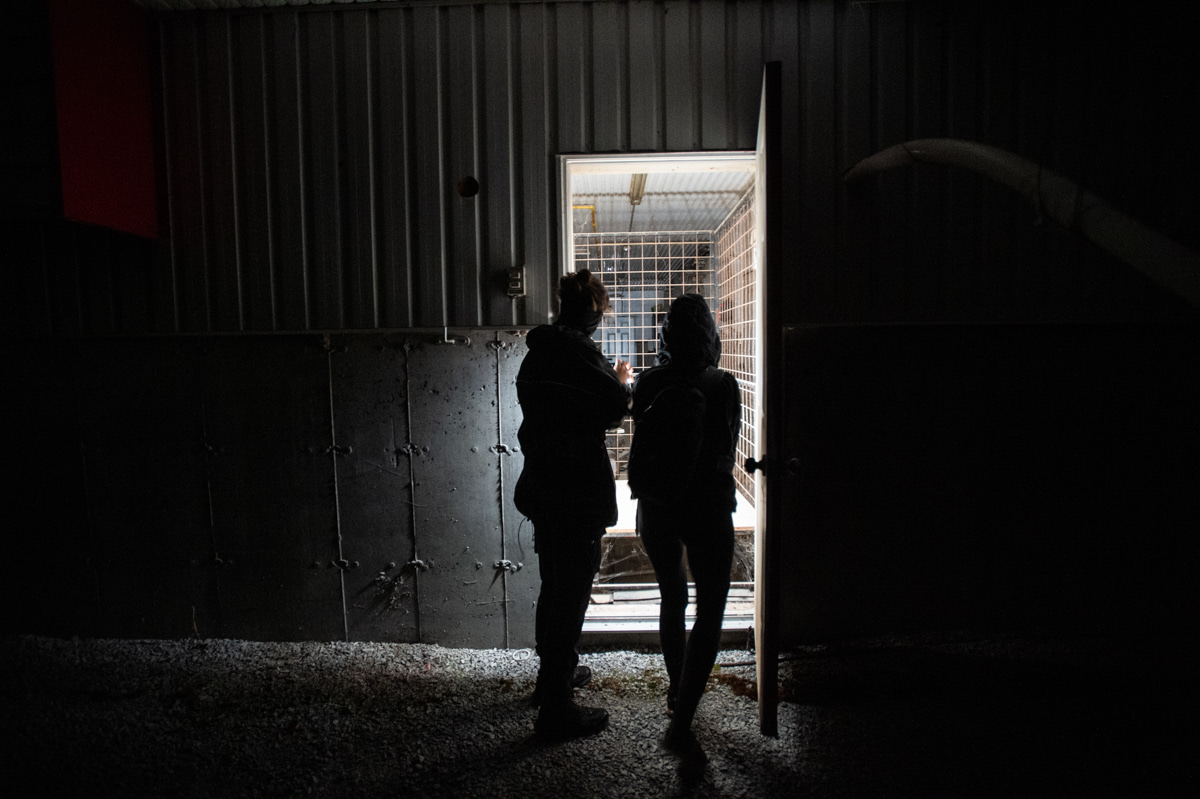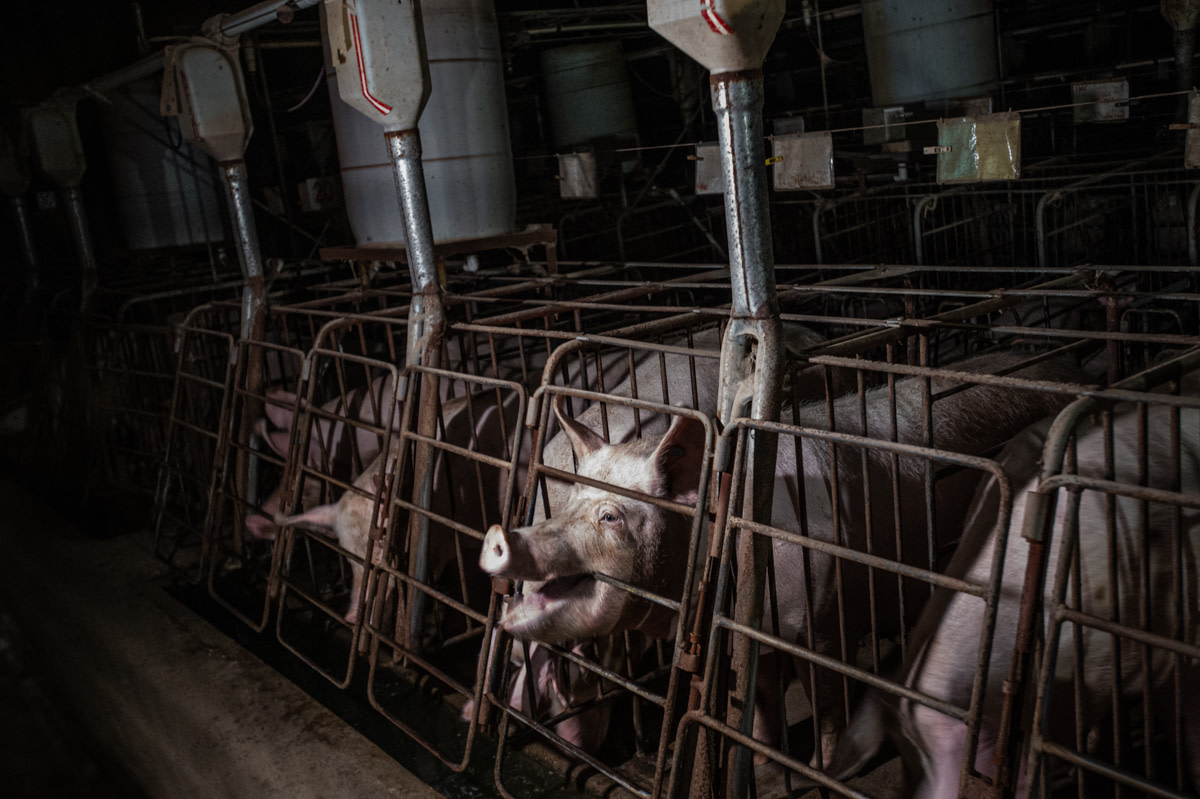US Pig Industry Fights To Keep Gestation Crates
“We opened the door and stepped into a dingy hallway with puddles of mucky water on the floor. We couldn’t hear anything – though the acrid smell of urine and feces got stronger as we moved further inside. Everything was damp. I felt dirty just standing in the space.” ― Victoria de Martigny, animal photojournalist
What Are Gestation Crates?
Our short film “Reclaim” helps to illustrate the size and reality of these cages.
Living in these conditions, often in darkness, does not allow for the animals to carry out their natural behaviours. Pigs are highly social and intelligent animals with complex communicative behaviour and maternal instincts. Research shows that when confined to gestation crates, pigs exhibit expressions of stress, fear, boredom and despondency. Gestation crates do not have bedding, and the pigs lie on slatted plastic, metal or concrete floors to allow for the flow of waste to be easily collected in pits beneath them. Nevertheless, pigs living in gestation crates, as seen in these photographs, are often living in their waste, and their bodies are filthy.
As a result of bans and restrictions in a number of states, in addition to pressure from major food retailers, nearly 40% of farmed pigs in the US today aren’t perpetually confined in gestation crates. But the pig industry wants to intervene with this progress towards improved animal welfare.
What Is Proposition 12?
The law applies to food products made from these animals and sold in California, even if the animals were raised and slaughtered outside of the state. Given that California imports most of its pig meat products from other states, the pig industry is arguing that this law will force a nationwide overhaul of its practices.
Approximately two-thirds of US pig production uses gestation crates. Yet media coverage of this issue rarely shows the reality of these crates. Almost exclusively stories about this issue use photos of pigs in large pens or in fields, or of cute piglets, all of which fail to accurately show to readers the extreme confines pigs in gestation crates typically endure.
Take Action
Help tell this important story. Use these new images of pigs inside gestation crates for your advocacy and communications around Proposition 12.
More like this from We Animals Media:
An Exposé of Fur Farming in Quebec
by We Animals Media | Sep 8, 2022











